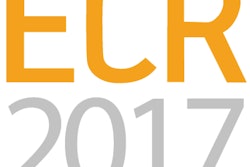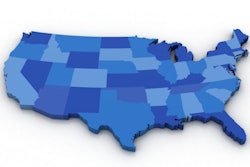
Using digital breast tomosynthesis (DBT) in combination with full-field digital mammography (FFDM) among Medicaid enrollees could save state programs more than $200,000 per year -- and individual plans more than $12,000 annually, according to a new study published online January 27 in the Journal of the American College of Radiology.
Even better, these cost savings would come from fewer recalls and earlier cancer detection, which benefit the women themselves, the authors wrote.
"In addition to yielding potential cost savings by reducing unnecessary procedures and resource utilization, the reduction in follow-up services is associated with meaningful humanistic impact," wrote the team led by Jeffrey Miller of Truven Health Analytics in Cambridge, MA.
Value drivers
Historically, women enrolled in Medicaid have had lower breast cancer screening rates than other populations, and they are 2.5 times more likely to be diagnosed with later-stage cancer compared with women with private insurance -- leading to increased morbidity and mortality from the disease, according to the authors.
As the clinical advantages of DBT continue to be demonstrated, the technology's economic benefits also are becoming more clear, namely its capacity to reduce recall rates, which reduces downstream costs of follow-up and diagnostic testing. DBT also has the potential to catch breast cancer earlier, when treatment costs are less.
 Dr. Sally Herschorn of the University of Vermont.
Dr. Sally Herschorn of the University of Vermont.Therefore, DBT could be a helpful tool for the Medicaid program, which has gained enrollees under the Patient Protection and Affordable Care Act, but is also subject to cost containment, according to Miller and colleagues.
"DBT's clinical benefits have been shown, and they're obvious to those of us in the trenches who are using the technology," co-author Dr. Sally Herschorn of the University of Vermont told AuntMinnie.com. "While Medicare covers DBT, only some private insurers have agreed to cover it. Medicaid, for the most part, does not. Our study demonstrates that DBT's cost savings more than offset its additional reimbursement costs. Perhaps insurers will listen to economics rather than science."
For the study, Miller's team used an economic model developed to estimate the financial impact of DBT combined with conventional digital mammography for breast cancer screening. Data for the model came from the Truven Health Analytics Medicaid Multi-State Database, which includes information from more than 31 million Medicaid enrollees from 12 states.
The group evaluated two annual screening scenarios -- digital mammography alone and digital mammography plus DBT -- in the context of a hypothetical, average-sized state Medicaid program of 1.4 million enrollees. For the model, the group assumed a digital mammography follow-up rate of 14.4% and that adding DBT would reduce that rate to the American College of Radiology benchmark of 10%. It also assumed a reimbursement rate for DBT of $37.
What did the model show? Adding DBT to digital mammography in the Medicaid population decreased costs.
| Impact of DBT on state Medicaid and individual programs | ||
| State Medicaid programs | Individual Medicaid plans | |
| Total annual cost savings | $207,432* | $12,298** |
*$776,017 savings from avoiding follow-up and $371,168 savings from earlier cancer detection offset the $939,752 needed to add DBT to digital mammography.
**$46,007 savings from avoiding follow-up and $22,005 savings from earlier cancer detection offset the $55,714 needed to add DBT to digital mammography.
"Our research shows insurers that DBT benefits Medicaid enrollees without additional expense -- in fact, it offers cost savings," Herschorn said.
Value-based healthcare
The study findings suggest that using DBT for breast cancer screening would benefit individual women in the Medicaid population as well as state programs, and it could also benefit the U.S. healthcare system in general, Miller and colleagues concluded.
"The use of DBT as a mammographic screening modality by Medicaid enrollees substantially reduces the need for follow-up diagnostic services and improves the detection of invasive cancers, allowing earlier, less costly treatment," the team wrote. "Results from this value analysis of DBT demonstrate that these beneficial attributes translate into meaningful cost savings for Medicaid and that wide adoption of DBT presents an opportunity to deliver value-based care in the U.S. health system in general."
Study disclosures
The study was funded by Hologic. Contributing authors Scott Pohlman and Kathleen Troeger were Hologic employees at the time of the study, and Drs. Sally Herschorn and Laurie Fajardo are unpaid consultants to the firm. Lead author Jeffrey Miller and co-author Machaon Bonafede, PhD, were employed at the time of the study by Truven Health Analytics, which received research funding from Hologic.



















